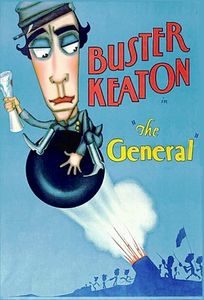Parlor, Bedroom and Bath (1931)
(On Cable TV, August 2019) If you’re used to the classic Buster Keaton silent comedy films, Parlor, Bedroom and Bath will seem a bit odd, because it features … sound. Keaton’s career took a dive after the introduction of sound, but the declining factor was Keaton’s contract with MGM, not sound itself. Proof of Keaton’s ability to amuse with sound can occasionally be found in this bedroom farce that unusually features quite a bit of dialogue from Keaton, and a few brief moments of physical comedy. Even out of his comfort zone, Keaton proves up to the task of being a romantic comedy lead, but it does take a while for the film to get going: after a fairly dull start, Parlor, Bedroom and Bath does get funnier when Keaton gets back to his physical comedy roots. The train crossing shot, for instance, is pure classic Keaton. He even finds an able comic partner with the very tall Charlotte Greenwood—some of the hotel room sequences later in the film are an inspiring mixture of farce and Keaton pratfalls. Alas, it does lead to an abrupt and unsatisfying ending that takes away some of the fun that Parlor, Bedroom and Bath had been building up to that point. The pre-Code origin of the film is obvious from some bedroom farce material that, while tame by today’s standard, wouldn’t have passed muster throughout much of the Hays Code years. It’s not a Keaton classic, but it can be a lot of fun at times, and hearing Keaton talk is a thrill on its own.




